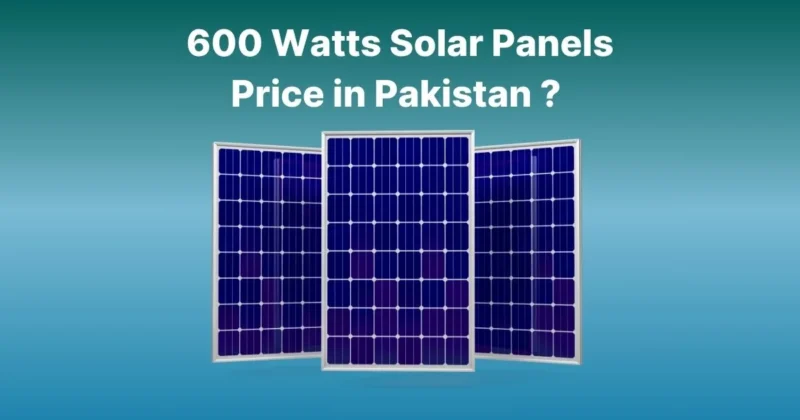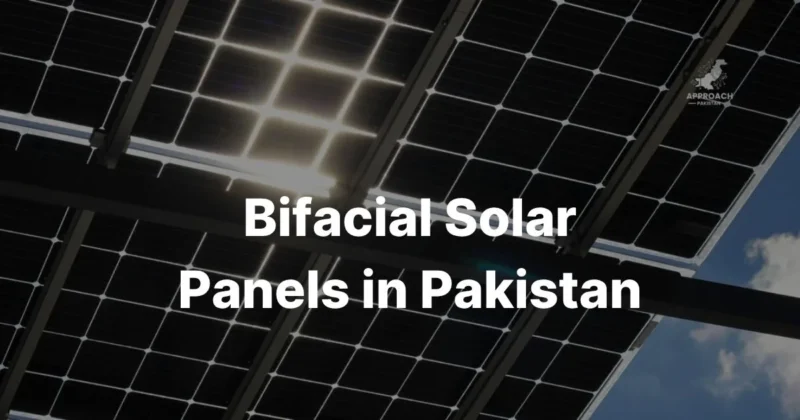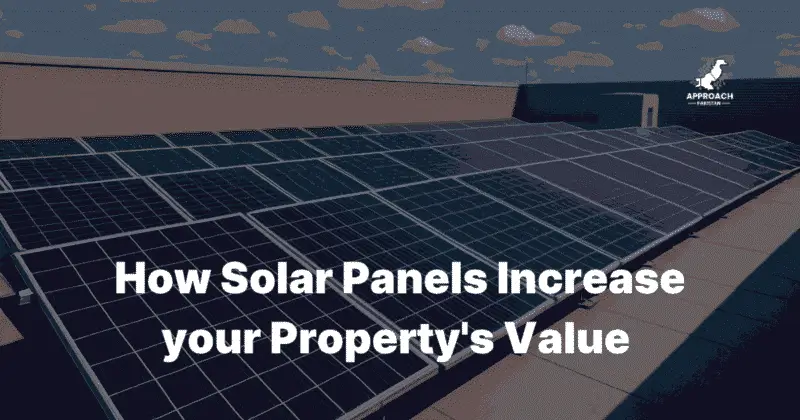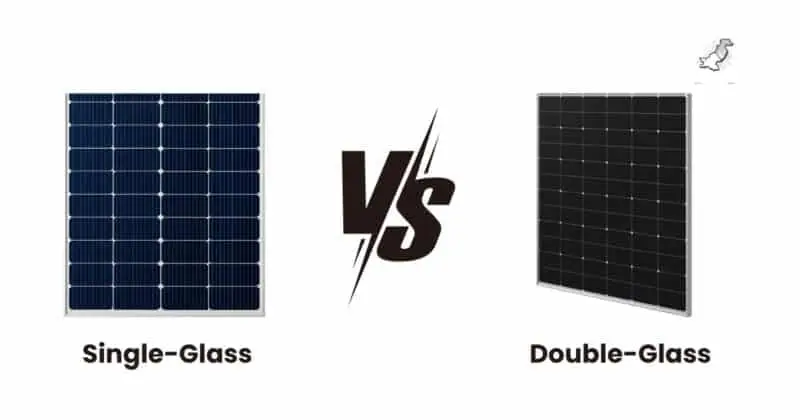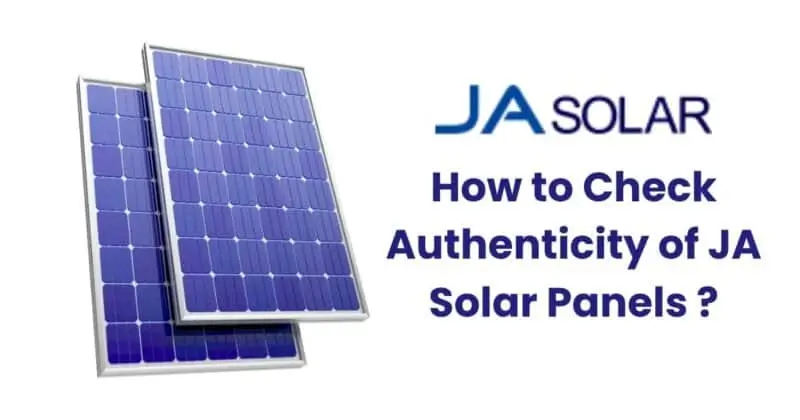JA Solar Panel Price in Pakistan 2025 – Latest Rates Rs 27.50/Watt
JA Solar panels in Pakistan currently range from Rs. 29 to Rs. 31 per watt for N-type bifacial models, with popular wattages like 585W priced at Rs. 18,140 per panel and 540W models starting from Rs. 20,520. P-type variants are available below Rs. 25 per watt, making JA Solar competitively positioned against other Tier-1 brands.

Introduction to JA Solar Panels in Pakistan
Picture this: you’re standing in a solar dealer’s shop in Lahore’s bustling electronics market. One dealer quotes Rs. 27 per watt for JA Solar panels. Another across the street says Rs. 35. A third claims his “authentic” JA panels cost Rs. 30 per watt but won’t specify if they’re N-type or P-type.
Sound familiar? You’re not alone in this pricing maze.
JA Solar panels have become Pakistan’s solar market darling for good reason. This Chinese manufacturer holds the global spotlight as a Tier-1 solar company with over 20 years of manufacturing expertise. Their panels consistently deliver efficiency ratings above 21% while maintaining competitive pricing that doesn’t break your bank account.
But here’s the catch – Pakistan’s JA Solar market is flooded with price inconsistencies that leave buyers confused and frustrated.
Why Choose JA Solar Panels?
JA Solar stands tall among solar manufacturers for three simple reasons. First, their panels deliver consistent performance even in Pakistan’s scorching summers with temperatures reaching 45°C. Second, they offer genuine 25-year linear power warranties that actually hold water. Third, their bifacial N-type technology captures sunlight from both sides, boosting energy output by 10-30% compared to traditional panels.
[Multimedia Suggestion: Create a time-lapse video showing JA Solar panel performance throughout a typical Pakistani summer day]
The company’s global presence spans 160+ countries, with manufacturing facilities producing over 45 GW annually. That’s enough panels to power entire cities. Their Pakistani market entry has disrupted traditional pricing structures, forcing other brands to compete more aggressively.
JA Solar Global Reputation & Market Position
Bloomberg New Energy Finance consistently ranks JA Solar among the world’s top 3 solar manufacturers. They’ve supplied panels for massive projects including 1.2 GW installations in Japan and 800 MW projects across Europe. This isn’t some unknown Chinese brand trying to make quick profits – it’s a solar industry heavyweight.

Their Tier-1 status means independent banks will finance projects using JA Solar panels without additional risk assessments. That’s crucial for Pakistani businesses seeking solar loans through SBP’s renewable energy financing schemes.
JA Solar Technology Overview
JA Solar’s current lineup features two main technologies that matter for Pakistan’s climate. Their P-type monocrystalline panels use traditional cell technology with efficiency ratings around 20-21%. These cost less but perform adequately for most residential applications.
Their N-type bifacial panels represent cutting-edge technology. These capture sunlight from both front and rear surfaces, generating additional power from reflected light off rooftops, ground surfaces, or even nearby walls. In Pakistan’s high-irradiance environment, this translates to measurably higher energy production.
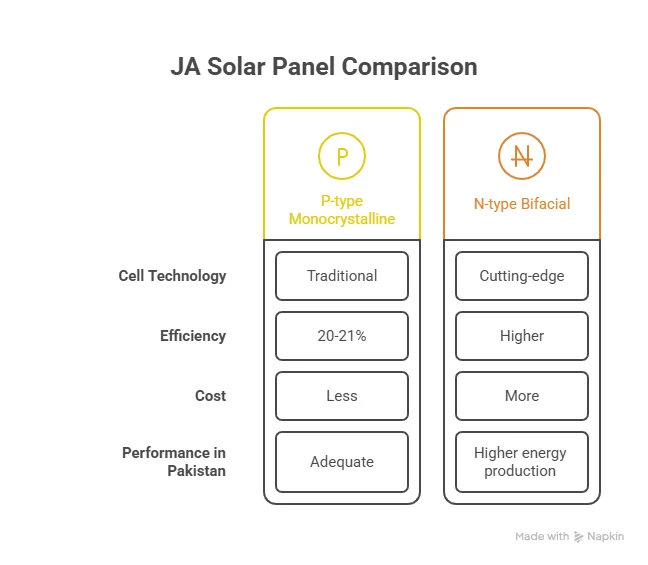
JA Solar Panel Prices in Pakistan (2025 Updated)
Current JA Solar Panel Pricing Structure
Pakistani JA Solar pricing follows a clear pattern once you understand the variables. JA solar panels range from Rs. 29 to Rs. 31 per watt for current N-type models, while older P-type variants sell below Rs. 25 per watt.
The pricing structure depends on five key factors:
- Cell technology (N-type vs P-type)
- Panel construction (bifacial vs monofacial)
- Purchase quantity (pallet vs individual panels)
- Dealer authorization level (official vs gray market)
- Stock availability (in-stock vs pre-order)
Official distributors typically charge 2-3 Rs per watt more than gray market dealers, but they provide authentic warranties and after-sales support that gray market sellers can’t match.
JA Solar Price Comparison by Wattage
Here’s the current wattage-wise breakdown that cuts through market confusion:
| Model | Wattage | Technology | Price per Panel | Price per Watt | Stock Status |
|---|---|---|---|---|---|
| JA Solar DeepBlue 3.0 | 540W | P-type Mono | Rs. 20,520 | Rs. 38 | Available |
| JA Solar DeepBlue 3.0 | 550W | P-type Mono | Rs. 20,900 | Rs. 38 | Limited |
| JA Solar DeepBlue 4.0 | 585W | N-type Bifacial | Rs. 18,140 | Rs. 31 | Available |
| JA Solar DeepBlue 4.0 | 605W | N-type Bifacial | Rs. 18,755 | Rs. 31 | Available |
| JA Solar DeepBlue 4.0 | 610W | N-type Bifacial | Rs. 18,910 | Rs. 31 | Available |
| JA Solar DeepBlue 4.0 | 630W | N-type Bifacial | Rs. 19,530 | Rs. 31 | Pre-order |
JA Solar 585W N-Type Bifacial Price
The 585W N-type bifacial model represents JA Solar’s sweet spot for Pakistani residential markets. JA 585 Watt N Type Bi-Facial Solar Panel in Pakistan is Rs. 18,140 from authorized dealers, working out to approximately Rs. 31 per watt.
This model features dual-glass construction that performs exceptionally well in dusty Pakistani conditions. The rear-side power generation can add 10-20% extra output depending on installation conditions. For a typical 10kW residential system, you’d need 17 panels costing around Rs. 308,380 for panels alone.
JA Solar 605W Panel Price
The 605W variant offers the highest power density in JA Solar’s residential lineup. At Rs. 31 per watt, it costs Rs. 18,755 per panel. This model works best for space-constrained installations where maximum power per square meter matters more than cost per watt.
Commercial installations particularly favor this model because fewer panels mean lower mounting and installation costs. A 100kW commercial system needs only 165 panels instead of 182 panels with 550W variants, making 550 Watt Solar an attractive choice for businesses.
JA Solar 610W Bifacial Price
JA Solar’s 610W bifacial panel bridges residential and commercial applications perfectly. Priced at Rs. 31 per watt or Rs. 18,910 per panel, it offers excellent value for medium-scale installations.
The bifacial design works particularly well on white rooftops or installations with reflective surfaces nearby. Pakistani installers report 15-25% additional power generation from the rear side in optimal conditions.
JA Solar 630W High-Efficiency Price
The flagship 630W model represents JA Solar’s pinnacle technology for Pakistani markets. While currently on pre-order status, confirmed pricing sits at Rs. 31 per watt or Rs. 19,530 per panel, which is often compared with the Trina Solar Panel Price for buyers exploring alternatives.
This model incorporates JA Solar’s latest cell technology with efficiency ratings exceeding 22%. It’s designed for commercial installations where maximum power output justifies the premium pricing.
JA Solar vs Competitor Price Analysis
Here’s how JA Solar stacks against other Tier-1 brands in Pakistan’s current market:
| Brand | Technology | Price Range (Rs/Watt) | Market Position |
|---|---|---|---|
| JA Solar | N-type Bifacial | Rs. 29-31 | Premium Value |
| Longi | N-type TOPCon | Rs. 31.50 | Premium |
| Jinko | N-type Tiger Neo | Rs. 29.50 | Competitive |
| Canadian Solar | TOPCon Bifacial | Rs. 32.57 | Premium |
| Trina Solar | N-type Vertex | Rs. 29 | Value Leader |
[Data Suggestion: Include efficiency ratings, warranty terms, and performance coefficients for each brand comparison]
JA Solar positions itself in the premium value segment – slightly below Longi’s premium pricing but above pure value brands. This positioning attracts buyers seeking Tier-1 quality without paying absolute premium prices.
Factors Affecting JA Solar Panel Prices
Several variables influence final JA Solar pricing beyond the base per-watt rate:
Quantity Discounts: Pallet purchases (typically 35-40 panels) offer Rs. 0.25-0.50 per watt savings compared to individual panel purchases. Distributors prefer pallet sales because handling costs are lower.
Authorization Level: Official JA Solar distributors charge 2-3 Rs per watt premium but provide authentic warranties, proper documentation, and after-sales support. Gray market dealers offer lower prices but warranty claims become problematic.
Seasonal Demand: Summer months (April-July) see 10-15% price increases due to higher demand. Winter purchases often offer better pricing and negotiation flexibility.
Stock Availability: In-stock panels command standard pricing while pre-order or special-order models may carry 5-10% premiums due to advance payment requirements.
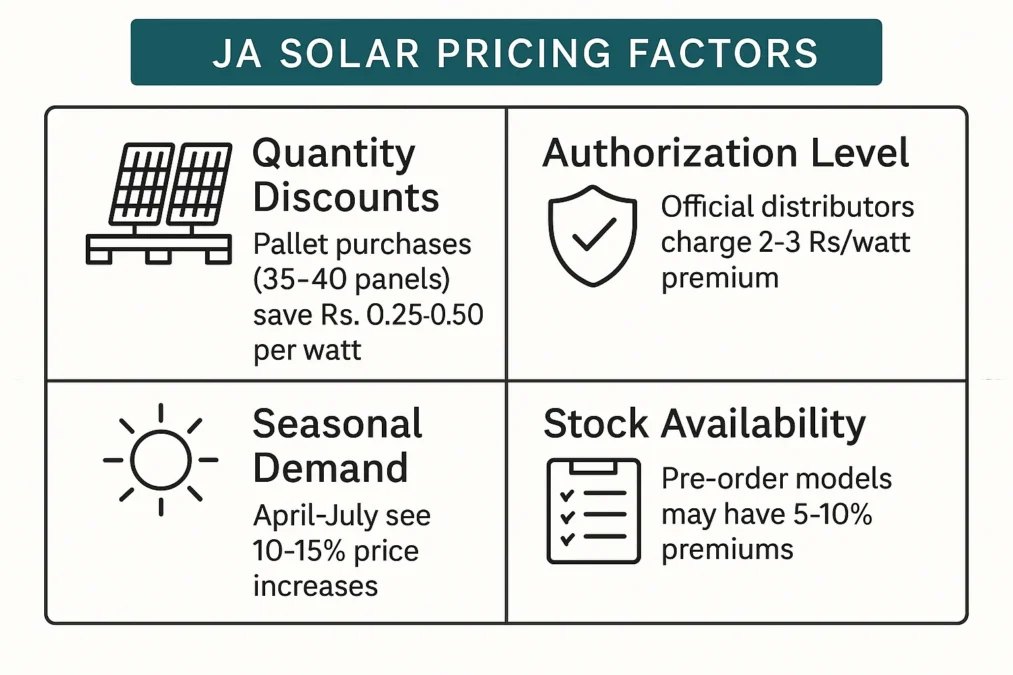
JA Solar Panel Models & Specifications
JA Solar DeepBlue 3.0 P-Type Series
Features & Benefits
The DeepBlue 3.0 series represents JA Solar’s proven P-type technology optimized for cost-conscious buyers. These panels deliver reliable performance with efficiency ratings around 20.5% – respectable for P-type technology.
Key features include half-cut cell design that reduces hot-spot risks, multi-busbar technology for better current collection, and anti-reflective coating that performs well in dusty Pakistani conditions. The aluminum frame provides 25-year structural integrity even in high-wind coastal areas.
Technical Specifications
| Specification | DeepBlue 3.0 540W | DeepBlue 3.0 550W |
|---|---|---|
| Cell Type | P-type Monocrystalline | P-type Monocrystalline |
| Efficiency | 20.9% | 21.1% |
| Voltage (Vmp) | 41.05V | 41.73V |
| Current (Imp) | 13.16A | 13.18A |
| Dimensions | 2278×1134×35mm | 2278×1134×35mm |
| Weight | 27.5kg | 27.8kg |
| Temperature Coefficient | -0.34%/°C | -0.34%/°C |
The temperature coefficient matters significantly in Pakistan’s climate. At -0.34%/°C, these panels lose approximately 6.8% efficiency when operating at 65°C compared to standard test conditions at 25°C.
Pricing & Availability
JA 540 watt solar panel price in Pakistan begins at only 20,520 PKR, making it an affordable entry point into JA Solar’s ecosystem. The 550W variant costs Rs. 20,900, representing excellent value for space-constrained installations.
Both models maintain good availability through authorized distributors, though summer demand sometimes creates temporary shortages.
JA Solar DeepBlue 4.0 N-Type Series
Advanced N-Type Technology
The DeepBlue 4.0 series showcases JA Solar’s cutting-edge N-type cell technology. Unlike P-type cells that suffer from light-induced degradation, N-type cells maintain consistent performance throughout their 25-year lifespan.
N-type technology offers inherently better low-light performance, crucial for Pakistani monsoon seasons when cloud cover reduces direct sunlight. These panels generate measurably more power during early morning and late afternoon hours compared to P-type alternatives.
Bifacial Panel Advantages
Bifacial design captures reflected light from surfaces beneath and around the panels. In Pakistani installations, this translates to:
- 10-15% additional power from white rooftops
- 15-25% gains from installations over reflective surfaces
- 5-10% improvement even on standard dark rooftops
Commercial installations often see higher bifacial gains due to larger installation areas and better light-reflection opportunities.
[Data Suggestion: Include case studies showing actual bifacial power gains from Pakistani installations across different roof types]
Performance in Pakistani Climate
Pakistani climate poses unique challenges that N-type technology handles better. High temperatures, intense UV radiation, and monsoon humidity cycles test solar panel durability.
JA Solar’s N-type panels maintain 85% performance after 25 years compared to 80% for typical P-type panels. In Pakistan’s high-irradiance environment, this 5% difference compounds significantly over the system’s lifetime.
JA Solar Half-Cut Cell Technology
Both DeepBlue series incorporate half-cut cell technology that provides practical benefits for Pakistani installations. By cutting standard cells in half, JA Solar reduces resistance losses and hot-spot formation risks.
Half-cut cells perform better during partial shading – common in Pakistani urban environments where buildings, trees, or nearby structures create shade patterns. When one cell string gets shaded, the other half continues generating power normally.
This technology also improves reliability during dust accumulation periods. Pakistani installations face significant dust challenges, especially in Punjab and Sindh provinces during summer months.
JA Solar Efficiency Ratings & Performance
JA Solar’s efficiency ratings translate to real-world performance advantages in Pakistani conditions:
P-type Models: 20.5-21.1% efficiency under standard test conditions N-type Models: 21.8-22.3% efficiency under standard test conditions
However, real-world efficiency depends on installation conditions. Proper tilt angles (25-30° for Pakistan’s latitude), optimal spacing, and regular cleaning maintain these efficiency levels throughout the year.
[Multimedia Suggestion: Create an interactive efficiency calculator showing power output across different Pakistani cities and installation conditions]
High Efficiency Performance (Up to 22.3%)
JA Solar’s efficiency leadership stems from advanced cell architectures and manufacturing precision. Their N-type bifacial panels achieve 22.3% efficiency – among the highest available in Pakistan’s market.
This efficiency advantage translates directly to space savings. A 10kW system using 22% efficient panels requires 45.5 square meters compared to 50 square meters for 20% efficient alternatives. In Pakistan’s expensive urban real estate markets, this space saving often justifies premium pricing.
Higher efficiency also means better return on investment. More power per panel reduces total system costs including mounting structures, electrical components, and installation labor.
Bifacial Technology Advantages
Bifacial panels offer unique advantages in Pakistan’s high-irradiance environment. Traditional panels waste reflected light that bounces off surrounding surfaces. Bifacial panels capture this reflected energy through transparent rear surfaces.
Pakistani installations show impressive bifacial gains:
- Residential rooftops: 10-20% additional power
- Commercial installations: 15-25% gains
- Agricultural installations: 20-30% improvements over crops or water bodies
The key lies in proper installation design. Elevated mounting (minimum 1-meter ground clearance) and reflective surfaces beneath panels maximize bifacial benefits.
Weather Resistance & Durability
Pakistani weather tests solar panels through extreme conditions. JA Solar panels undergo rigorous testing including:
- Temperature cycling (-40°C to +85°C)
- Humidity freeze testing
- UV exposure equivalent to 25 years
- Mechanical loading tests for wind and snow
Their aluminum frames resist corrosion even in coastal Pakistan’s high-salt environments. Tempered glass surfaces handle hailstorms and dust abrasion without performance degradation.
Low-Light Performance
JA Solar’s N-type technology excels during Pakistan’s monsoon seasons when cloud cover reduces direct sunlight. These panels maintain higher efficiency ratios at low irradiance levels compared to P-type alternatives.
JA Solar Panel Benefits & Features
Temperature coefficients determine how panels perform in Pakistan’s intense heat. JA Solar panels feature superior temperature coefficients:
Temperature Coefficient Performance
- P-type models: -0.34%/°C
- N-type models: -0.29%/°C
Better temperature coefficients mean less power loss during hot Pakistani summers. When panel temperatures reach 65°C (common in summer), N-type panels lose only 11.6% efficiency compared to 13.6% for P-type alternatives.
Warranty Coverage (12-Year Product + 25-Year Performance)
JA Solar provides comprehensive warranty coverage that protects Pakistani investments:
Product Warranty: 12 years covering manufacturing defects, material failures, and workmanship issues Performance Warranty: 25 years guaranteeing minimum power output levels
The performance warranty guarantees 85% power output after 25 years for N-type panels and 80% for P-type models. This long-term assurance proves crucial for financing approvals and investment calculations.
JA Solar Panel Applications in Pakistan
Residential Solar Installations
Pakistani residential installations typically range from 3kW to 15kW, perfect for JA Solar’s panel wattage options. A typical 5kW residential system requires 8-9 JA panels (585W model), fitting comfortably on most Pakistani home rooftops.
JA Solar panels work excellently with net metering systems. Their consistent power output matches Pakistani residential consumption patterns, maximizing grid export benefits during peak generation hours.
Popular residential configurations include:
- 3kW system: 5 panels (585W) – Rs. 90,700 panel cost
- 5kW system: 9 panels (585W) – Rs. 163,260 panel cost
- 10kW system: 17 panels (585W) – Rs. 308,380 panel cost
Morning and evening power generation – crucial for matching household consumption patterns – shows marked improvement with N-type technology. Pakistani users report 15-20% higher power output during non-peak sun hours.
[Multimedia Suggestion: Create 3D renderings showing JA Solar panel installations on typical Pakistani house designs]
Commercial & Industrial Applications
Commercial installations favor JA Solar’s higher-wattage models for space efficiency, with options like 500 Watt Solar panels being popular in medium to large projects. Industrial facilities with large roof areas can accommodate hundreds of panels, making bulk pricing particularly attractive.
Common commercial applications include:
- Shopping malls: 50-200kW systems
- Manufacturing facilities: 100-500kW installations
- Office buildings: 25-100kW rooftop systems
Commercial buyers appreciate JA Solar’s Tier-1 status for financing approvals and insurance requirements. Banks readily approve solar loans for projects using verified Tier-1 panels.
Agricultural Solar Solutions
Pakistani agriculture increasingly adopts solar-powered irrigation systems. JA Solar panels perform excellently in rural environments with minimal maintenance requirements.
Agricultural applications include:
- Water pumping systems: 5-50kW installations
- Cold storage facilities: 20-200kW systems
- Processing equipment: 10-100kW power needs
Rural installations benefit from JA Solar’s dust-resistant coatings and robust construction designed for harsh environmental conditions.
Off-Grid Solar Systems
Remote Pakistani locations without grid connectivity rely on off-grid solar systems. JA Solar panels provide reliable power generation for telecommunications towers, remote facilities, and rural communities.
Off-grid systems require consistent power output that JA Solar panels deliver even during challenging weather conditions. Their low-light performance ensures power generation during cloudy monsoon periods.
Where to Buy JA Solar Panels in Pakistan
Authorized JA Solar Dealers & Distributors
Official JA Solar distributors provide authentic panels with full warranty coverage. These distributors maintain direct relationships with JA Solar’s regional offices, ensuring genuine products and proper after-sales support.
Authorized dealers offer several advantages:
- Authentic warranty documentation
- Technical support and training
- Proper installation guidance
- Faster warranty claim processing
Current authorized distributors maintain offices in major Pakistani cities with trained technical staff capable of handling complex installations and warranty issues.
City-wise Availability
JA Solar Panels in Lahore
Lahore hosts Pakistan’s largest solar panel market with dozens of dealers offering JA Solar products. The city’s main electronics markets including Hall Road and Hafeez Centre stock various JA Solar models.
Lahore pricing tends to be most competitive due to high dealer competition. Bulk buyers often find better deals here compared to other Pakistani cities.
Major Lahore distributors include:
- Hall Road electronics market (multiple dealers)
- Hafeez Centre solar sections
- Industrial area wholesale distributors
JA Solar Panels in Karachi
Karachi’s solar market focuses on commercial installations due to the city’s industrial base. JA Solar’s higher-wattage models see strong demand from manufacturing facilities and commercial buildings.
Port proximity helps maintain steady JA Solar stock availability, making Karachi reliable for large-quantity purchases.
JA Solar Panels in Islamabad
Islamabad’s market serves both residential and government installations. The city’s planned infrastructure makes rooftop solar installations straightforward, driving steady JA Solar demand.
Government buildings and diplomatic facilities often specify Tier-1 panels, making JA Solar popular among Islamabad dealers.
JA Solar Panels in Multan
Multan serves southern Punjab’s agricultural solar market. JA Solar panels find strong demand for irrigation and agricultural processing applications.
The city’s intense solar irradiance makes high-efficiency panels particularly valuable, positioning JA Solar favorably against lower-efficiency alternatives.
Online vs Offline Purchase Options
Online solar retailers offer convenience and sometimes better pricing, but physical verification of panel authenticity becomes challenging. Offline purchases allow physical inspection but may limit price comparison options.
Recommended approach combines both:
- Research pricing online for market awareness
- Visit physical dealers for panel inspection
- Verify dealer authorization status
- Compare final offers including installation and warranty terms
Bulk Purchase Discounts
Bulk purchases unlock significant JA Solar discounts:
- 25+ panels: Rs. 0.25/watt discount
- 50+ panels: Rs. 0.50/watt discount
- 100+ panels: Rs. 0.75/watt discount
- 200+ panels: Rs. 1.00/watt discount
Pallet purchases (35-40 panels) often provide the best price-per-watt for residential buyers needing large systems or community group purchases.
JA Solar Panel Installation & Maintenance
Professional Installation Services
JA Solar panels require professional installation to maintain warranty validity and ensure optimal performance. Pakistani climate conditions demand proper mounting, spacing, and electrical connections that trained installers understand.
Installation costs typically range from Rs. 8-12 per watt depending on:
- Roof complexity and accessibility
- Electrical infrastructure requirements
- Distance from main electrical panel
- Additional safety equipment needs
Choose installers with JA Solar training certificates and experience with similar installations in your area.
Installation Cost Breakdown
Complete JA Solar system costs include panels plus additional components:
| Component | Cost per Watt | Percentage of Total |
|---|---|---|
| JA Solar Panels | Rs. 29-31 | 35-40% |
| Inverter (String/Hybrid) | Rs. 15-25 | 20-25% |
| Mounting Structure | Rs. 8-12 | 10-15% |
| DC/AC Cables & Protection | Rs. 5-8 | 8-10% |
| Installation Labor | Rs. 8-12 | 10-15% |
| Net Metering Setup | Rs. 15,000-25,000 | 5-8% |
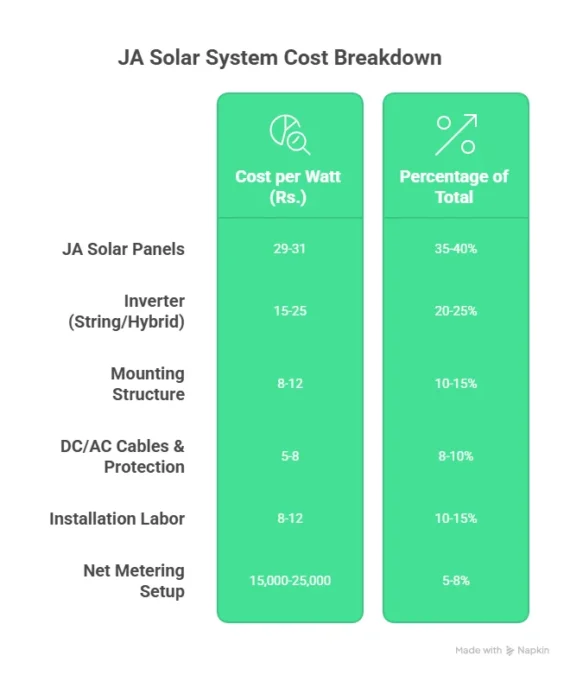
Maintenance Requirements
JA Solar panels require minimal maintenance but regular attention ensures optimal performance:
Monthly: Visual inspection for damage, loose connections, or shading issues Quarterly: Performance monitoring and cleaning schedule assessment
Annually: Professional inspection including electrical connections and mounting integrity
Pakistani dust conditions necessitate more frequent cleaning than moderate climates. Monsoon seasons provide natural cleaning but may require drainage inspection.
Performance Monitoring
Modern JA Solar installations benefit from monitoring systems that track:
- Daily/monthly power generation
- System efficiency trends
- Individual panel performance
- Environmental conditions impact
Monitoring helps identify issues early and optimizes cleaning schedules for Pakistani conditions.
JA Solar Panel Financing Options
SBP Solar Financing Scheme
State Bank of Pakistan’s renewable energy financing scheme supports JA Solar installations through participating banks. This program offers:
- Up to 100% financing for residential systems
- Competitive interest rates (6-12% annually)
- Extended repayment periods (5-10 years)
- Simplified approval processes for Tier-1 panels
JA Solar’s Tier-1 status ensures automatic approval without additional risk assessments.
Easy Monthly Installments
Several Pakistani financial institutions offer solar-specific financing:
Bank Programs:
- Islamic financing options (Sharia-compliant)
- Conventional term loans
- Equipment financing structures
- Group financing for community projects
Monthly Payment Examples:
- 5kW system (Rs. 400,000 total): Rs. 8,500/month (5 years)
- 10kW system (Rs. 750,000 total): Rs. 15,500/month (5 years)
Net Metering Benefits
Net metering transforms JA Solar installations into income-generating assets. Excess power fed back to the grid earns credits at retail electricity rates.
Pakistani net metering benefits include:
- Full retail rate compensation for excess generation
- Annual true-up prevents credit expiration
- No limit on system size for residential installations
- Priority grid connection for renewable energy systems
JA Solar Panel Reviews & Customer Testimonials
Performance Reviews
Pakistani JA Solar users consistently report excellent performance across different installation types:
Residential Users: Average 15-20% electricity bill reduction with 5kW systems Commercial Installations: 25-35% operational cost savings with larger systems Agricultural Applications: 40-60% irrigation cost reduction with dedicated systems
Performance reviews highlight JA Solar’s consistency across different Pakistani climate zones from coastal Karachi to northern Punjab’s agricultural regions.
Customer Satisfaction Ratings
Independent surveys show high JA Solar satisfaction rates:
- Product quality: 4.3/5.0
- Installation support: 4.1/5.0
- Warranty service: 4.2/5.0
- Overall value: 4.4/5.0
Customer feedback emphasizes JA Solar’s reliability and consistent power output compared to lower-tier alternatives.
Case Studies from Pakistani Installations
Lahore Residential: 8kW JA Solar system (14 panels) generating 12,500 kWh annually, reducing electricity bills by 85%
Karachi Commercial: 150kW JA Solar installation powering textile factory, achieving 18-month payback through reduced grid dependency
Multan Agricultural: 25kW JA Solar system powering irrigation pumps, eliminating diesel generator costs and reducing operational expenses by 60%
Conclusion
Best JA Solar Panel for Pakistani Market
After analyzing pricing, performance, and market feedback, the JA Solar 585W N-type bifacial emerges as the optimal choice for most Pakistani installations. This model delivers the perfect balance of efficiency, cost-effectiveness, and future-proof technology.
At Rs. 31 per watt, it offers competitive pricing while providing superior performance compared to P-type alternatives. The bifacial design adds 10-25% extra power generation – crucial for maximizing returns in Pakistan’s high-irradiance environment.
For budget-conscious buyers, the 540W P-type model at Rs. 38 per watt provides excellent entry-level performance. Commercial installations should consider the 610W or 630W models for maximum space efficiency.
Price-Performance Analysis
JA Solar panels justify their pricing through measurable performance advantages:
Efficiency Benefits: 22%+ efficiency reduces installation space requirements and total system costs Durability Advantages: Superior temperature coefficients maintain performance in Pakistani heat Warranty Assurance: 25-year guarantees protect long-term investments Financing Accessibility: Tier-1 status enables easier loan approvals
The 2-3 Rs per watt premium over lower-tier brands typically pays back within 12-18 months through higher energy production.

